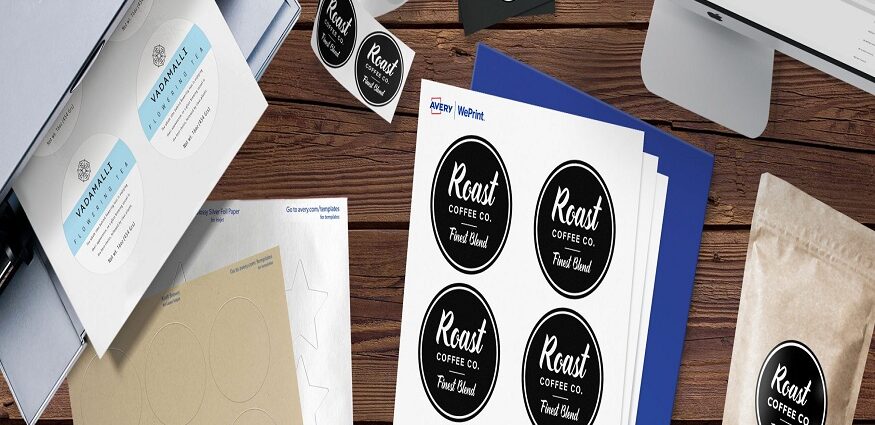For many brands, custom stickers have become an essential feature of food packaging labeling. However, most businesses are still not fully utilizing their capabilities. Let us look at how bespoke stickers can improve the food package labeling approach beyond the basics.
Compliance in addition to Marketing
Stickers are typically used to display nutrition statistics, ingredient lists, and other legally required information. While this is required for compliance, it misses a chance for marketing. Custom stickers enable creative expressions that might captivate customers and strengthen their brand.
Instead of ordinary text, employ eye-catching visuals and pictures. Use their brand’s colors and typography to ensure visual consistency across packages. Highlight distinguishing features such as organic certification or regional sourcing. One can also advertise limited-time deals or new product launches. Customers will notice these stickers and become more involved with their brand as a result.
Identifying Specific Audiences
Different demographics react differently to messaging. Use bespoke stickers to adapt the communication to each product’s target market.
Feature vivid designs and characters from major franchises on kids’ snacks and cereals. Highlight crucial nutritional characteristics for health-conscious millennials, such as protein content. Attract aging boomers by emphasizing the absence of preservatives and artificial components. Stickers that are tailored to the demands of the audience boost relevance and impact.
Improving the User Experience
Aside from marketing, stickers can improve the entire user experience. Add instructions or recommendations for best results. Baking instructions on mixes, for example, or recommended serving sizes on sauces. It allows customers to get the most out of their products in terms of value and enjoyment.
To prevent food waste, emphasize storage and expiration dates. Provide recipe suggestions for using the product. Customers will value these add-ons that address problems and inspire creativity. It increases brand loyalty by creating a more engaging and useful relationship.
Optimization and testing
Custom stickers allow firms to experiment, receive feedback, and continuously improve. Experiment with different designs, messaging, and places to see what works best. To assess efficacy, track sales data or conduct surveys.
For example, an organic yogurt business discovered that callouts showcasing living active cultures resulted in increased sales. A soup business discovered that customers preferred expiration dates on the front of packages rather than the rear. Such insights allow for the optimization of stickers to maximize results over time.
Moving Past Packaging
Custom stickers can be used for more than just product labeling. They can be used to promote in-store merchandising and displays. Stickers on shelves or coolers draw buyers’ attention at the point of purchase.
They are also involved in sampling initiatives. New items and flavors are introduced with stickers on sample cups or sachets. Customers who enjoy the samples can buy the whole product. Stickers make it easier to sample products at retail establishments, as well as at events and trade exhibits.
Promotional Collaborations
Collaborate on combined sticker marketing with related brands. For example, collaborate with a baking ingredient provider to create stickers promoting recipe ideas that incorporate both of your products.
One may also collaborate with local farms to encourage clients to visit and “pick their own” by providing stickers with farm names and locations. This type of grassroots coalition is a win-win situation in terms of visibility.
Use Stickers in E-Commerce
Customers who shop online have come to expect extras to enhance their experience. Include a personalized Sticker Printing sheet with each e-commerce order.
Logos, expressions, or icons from the company’s worldwide could be used. Allow recipients to personalize with names or remarks. These stickers will delight students as they decorate their lunchboxes and notebooks.
Consider dynamic stickers in conjunction with loyalty programs. Members receive sticker sheets or individual stickers for meeting expenditure goals. One can redeem stickers digitally or have real copies mailed to them. The game mechanics keep clients digitally engaged with their company.
Options for Customization
Allow users to create their stickers while adhering to company requirements. Upload photographs and text, or select from a variety of template styles.
Produce custom sheets as needed for delivery. People adore flaunting their one-of-a-kind, self-designed stickers in public. Personalization strengthens emotional connections to brands.
You might also sell ready-made sheets in a range of styles, allowing buyers to choose their favorites. Have alternatives for people of different ages, such as glitter or holographic effects. Allow others to express themselves through your stickers.
Monitoring the Success of Sticker Campaigns
Brands must track important data to verify the effectiveness of their sticker initiatives. When launching new digital sticker initiatives, analyze web traffic and social mentions. Take note of any spikes in online activity.
After distributing limited-edition or seasonal stickers, review sales data. Look for patterns in sticker shipments and buy rates. Timing and designs should be adjusted accordingly.
Send out surveys to clients asking how they felt about and interacted with stickers. Collect input on favorite designs and preferred positioning. Develop programs based on real-world data.
Increasing the Lifespan of Stickers
Stickers, once applied, are visible for a long time after the original interaction. Plan how your stickers will have an enduring impact.
Encourage customers to share images of themselves wearing product stickers on social media. Run contests to award the most inventive displays. Organically, gained exposure spreads.
Consider creating community boards that are peel-and-stick. Create virtual or physical locations for people to proudly display their collections. It encourages fan interaction.
Initiatives for Sustainability
Collaborate with environmental organizations on sticker campaigns emphasizing sustainable activities. Create sticker sheets with advice for decreasing food waste and living more environmentally friendly.
Distribute to nonprofits and schools that are participating. These stickers educate communities on vital problems in addition to advertising your business. Customers will respect your commitment to ethical ideals.
Conclusion
Finally, bespoke stickers are an inexpensive and effective approach for food manufacturers to improve their packaging and engage with their customers. Stickers, when used effectively in marketing, promotions, and partnerships, can increase relevance, promote engagement, and raise sales in the long run. Most significantly, they provide a way to provide value to people by providing utility, enjoyment, customization, and support for important causes. Stickers that are viewed as more than just a compliance tool, but as a relationship-building tool, will be best positioned for future success.

